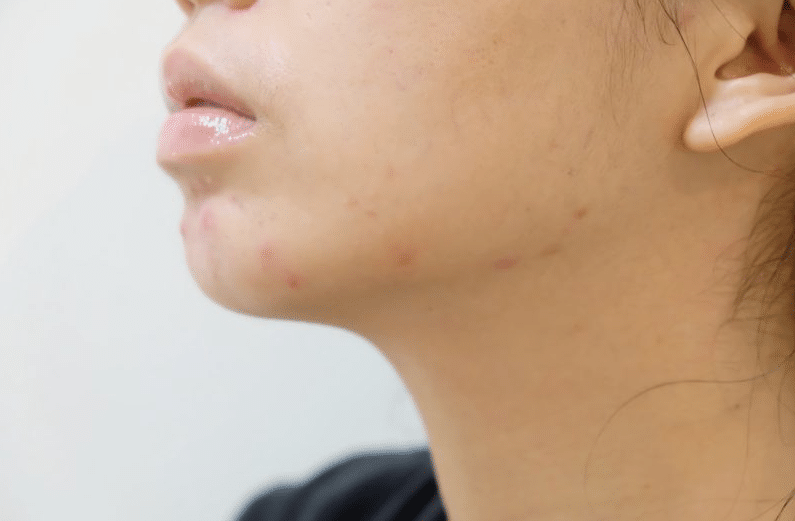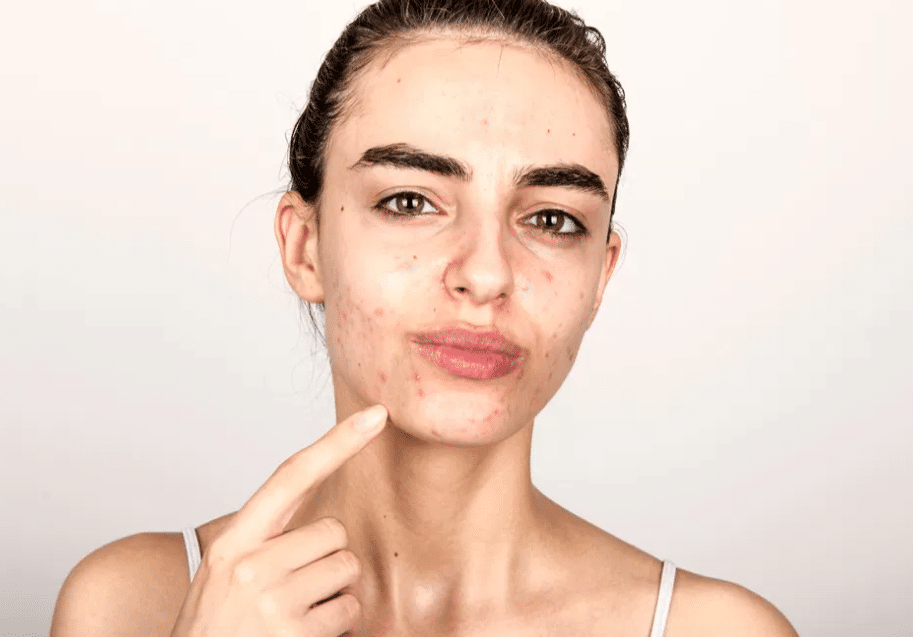Closed Comedones Extraction
Closed Comedones: If an inflamed, angry-red pimple is the skin-care equivalent of a scream, a closed comedone is a threatening whisper. Seemingly headless and unpoppable, closed comedones are white or skin-colored bumps that gradually build beneath the surface of the skin until they’re large enough to be visible in profile.
Closed comedones are commonly called whiteheads which contrary to popular belief aren’t actually those white, pus-filled pimples you’re so often tempted to pop. In fact, actual whiteheads aren’t even really poppable. However, if you attempt to pop them or they get irritated by bacteria, they can develop into poppable pimples.

Closed comedones look like little bumps across the skin’s surface. They’re not red and inflamed like your typical pimple, and they don’t hurt. A closed comedo (singular of comedones) develops when a plug of skin cells and oil becomes trapped within the hair follicle. The plug fills the follicle, swelling it out and creating that bump that you see on your skin.
Tips For Identification
Blackheads are open-faced. When the melanin pigment (found in the sebum produced by our oil glands) makes contact with the air at the top of an open comedone, it oxidizes and turns dark. This is why blackheads have a dark appearance. Whiteheads, on the other hand, have closed surfaces. They look like small white or flesh-colored dots.
Causes
Some people are more prone to developing comedones, or pore blockages than others. Everyone gets closed comedones every now and then. But if you have a lot of them, and they’re fairly constant, you probably have a type of acne called comedonal acne. Closed comedones are really common during the tween and teen years, as the skin’s sebaceous glands (also known as oil glands) ramp up production.3 With all that excess oil, comedones are more likely to form.
Read Also: How Long Does Ruptured Ovarian Cyst Pain Last
Your skin cells normally shed at the surface, allowing new skin cells to form. Sometimes, dead skin cells can get trapped within the hair follicles. When combined with the natural oils in your pores (sebum), a plug can form. This type of acne primarily affects adults with oily skin. It’s also more common in people who smoke.
Other risk factors for comedonal acne include:
- high dairy consumption
- a diet that consists of a lot of fats and sugars
- overhydrated skin, usually from using the wrong moisturizer
- high humidity
- laser therapy or chemical peels
- follicle injury from “picking” skin or popping comedones
How To Get Rid Of Closed Comedones
There are many topical treatments for closed comedones like cleansers that contain benzoyl peroxide, glycolic acid, salicylic acid, or sulfur, which can be perfect for treating acne in general. Include them in your daily skin-care routine.

- Benzoyl Peroxide – An ingredient most often found in acne gel, benzoyl peroxide dries out the existing pimples, and prevents creating new ones. It’s also believed that it directly destroys bacteria that trigger acne. There are many products available that contain benzoyl peroxide. Be patient, it takes around four weeks to see results and you need to use it continuously for lasting results.
- Salicylic acid – Salicylic acid can often be found in face soaps and masks and it prevents pores from getting clogged. It does not have any effect on sebum production and does not kill bacteria. It works by exfoliating the skin and removing dead skin cells that can clog pores which can help with closed comedones. Just like benzoyl peroxide, the effect lasts while it’s being used, if you stop using it the whiteheads might return.
- Resorcinol – This ingredient is less common than the others on this list, but it’s also very helpful for removing dead skin cells. It has a keratolytic effect which is quite effective in shedding dead skin cells. It works by removing the top layer of skin, unclogging the pores. You can find it in over-the-counter topical acne treatments, with a concentration of 2% or less.
Closed Comedones Chin
Salicylic Acid
The NCBI lists this beta-hydroxy acid as an anti-inflammatory and anti-bacterial agent that is capable of promoting exfoliation. Dermatologist and Skincare.com consultant Dr. Jeanne Eyde recommends the BHA salicylic acid to help prevent clogged pores and stop closed comedones from forming. We like the La Roche-Posay Effaclar Clarifying Solution Acne Toner, an exfoliating toner with salicylic and glycolic acid that helps to remove pore-clogging debris and smooth skin texture.
Glycolic Acid
Alpha-hydroxy acids are another type of chemical exfoliator that can be used to prevent clogged pores. Dr. Eyde encourages the use of glycolic acid, which the NCBI states have an excellent capability to penetrate the top layers of skin, in particular. For easy use, opt for product-soaked pads like the Peter Thomas Roth Max Complexion Correction Pads, formulated with glycolic acid and salicylic acid, that promotes even skin tone while also removing excess oil. The pad itself is textured, too, providing extra exfoliation.
Can You Get Rid Of Closed Comedones?
Occasionally closed comedones go away on their own without much treatment. But generally, they don’t, Dr. Yang says. And even if they do, Dr. Conrad says it can take weeks or months.
What Is The Cause Of Closed Comedones?
In most cases, closed comedones or whiteheads grow during puberty, usually as a result of hormonal changes in our bodies and an increase in sebum production. The sebum fills up the pores and leaves the skin unable to defend itself from dead cells and bacteria.
How Do You Treat Closed Comedones Naturally?
- Facial steam. Exposing the skin to steam encourages plugged pores to open up.
- Apple cider vinegar. Apple cider vinegar is very acidic and considered an astringent, capable of drying out and shrinking the pores.
- Lemon juice.
- Tea tree oil.
- Honey.
- Witch hazel.
- Salicylic acid.
- Benzoyl peroxide.
Do Closed Comedones Turn Into Pimples?
They’re not red and inflamed like your typical pimple, and they don’t hurt. A closed comedo (singular of comedones) develops when a plug of skin cells and oil becomes trapped within the hair follicle. Closed comedones can happen anywhere on the skin, but they most often pop up on the face, neck, chest, and back.